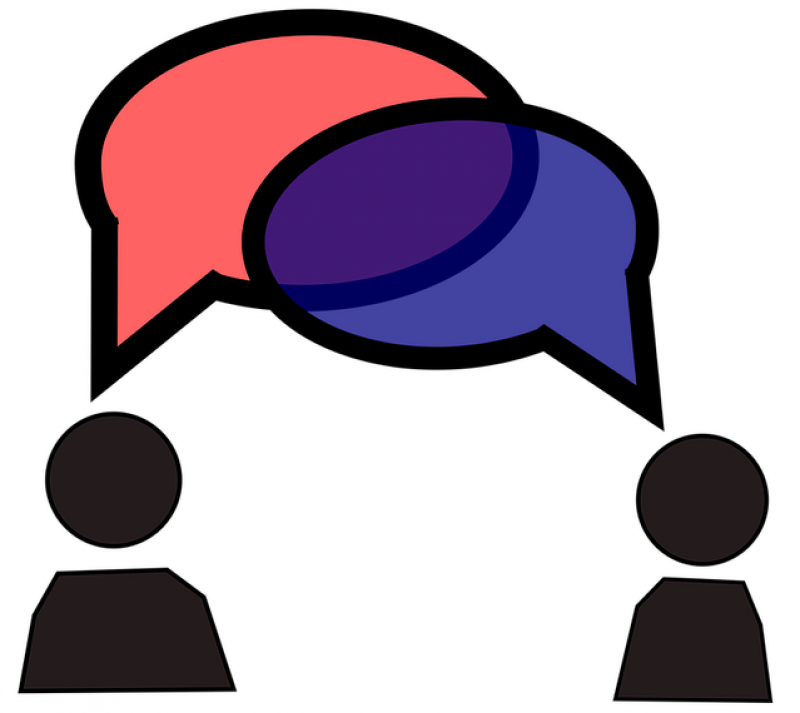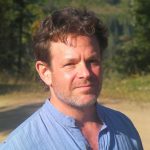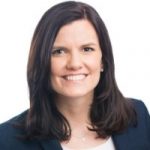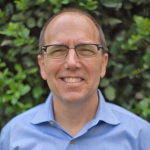
Stories

A Few Reflections on the Challenges of Engaging Across Divisions
As the calendar year closes, we’ve reached out to several leaders in journalism, academia, philanthropy and social entrepreneurship to listen more deeply to what’s on their minds as they foster civic engagement in the current environment. We’ve heard several themes resonate:
- The importance of listening broadly and responding effectively to what communities care about;
- A need to explore new approaches to building productive engagement with science, media and the democratic process in the digital age;
- And an urgency to seek connections across divisions of profession, experience, culture and geography to find common ground.
Below, we present conversations with several of our grant partners working in diverse areas, pointing to profound challenges and opportunities ahead:
David Bornstein, Cofounder of the Solutions Journalism Network
“Covering the creative responses, making them visible and helping people to discuss them, is a powerful route to civic engagement.”
Kristen Cambell, Executive Director of Philanthropy for Active Civic Engagement
“Right now, there is a big opportunity for everyone to seek to understand as much as we hope to be understood.”
Jonathan Fanton, President of the American Academy of Arts & Sciences
“More research is needed to develop a better understanding of how scientific advances can both mitigate and exacerbate social inequality.”
Eric Liu, Executive Director of the Aspen Institute Citizenship and American Identity Program
“Scientists can learn from active citizens about how to understand the needs and fears of communities.”
Dennis Whittle, Executive Director and Cofounder of Feedback Labs
“Only when there is credibility and trust can technology be leveraged to have the relevant conversations at scale.”
 David Bornstein, Solutions Journalism Network
David Bornstein, Solutions Journalism Network
The Solutions Journalism Network provides resources and training for journalists to promote rigorous reporting on constructive responses to social problems. The Rita Allen Foundation has supported its creation and evaluation of new tools as part of our support for innovative approaches to fostering informed civic engagement.
What are some of the most compelling lessons you and your organization have been thinking about as you reflect on 2016?
There is clearly a perception among many Americans that journalists are arrogant, out of touch and condescending, and they only swoop in when something bad happens or to spotlight the backwardness of the local yokels.
The siloed nature of media is responsible for the decreases in respect, trust and appreciative knowledge that Americans have for “others” across many dividing lines, not just racial and ethnic lines, but also across rural and urban lines, across class lines and across age lines.
Many Americans have great difficulty imagining or even believing in possibilities of systemic or substantive change, or activating their own agency and power (because they so rarely see it reflected in the news). This undermines constructive civic engagement.
Looking ahead to 2017 and beyond, what key opportunities do you see for your work?
We plan to explore projects with news partners that help build understanding across lines of difference and spotlight models aiming to address the major economic problems that were central concerns in the election. We plan to work more deeply in rural areas, and we plan to work more deeply with news partners to facilitate constructive public conversations that bring people together across lines of difference—to better understand how news, specifically solutions journalism, can tee up more constructive, socially impactful and depolarizing conversations.
What new possibilities for greater civic engagement do you see?
We see possibilities in bringing people together to discuss real ideas about how to respond more effectively to the problems that communities care about most. There is in fact very little argument across the country that we have to find better ways to recreate or reconstitute social mobility for many Americans, that we have to improve the healthy development of children and that we have to reduce violence and other pathologies. Covering the creative responses, making them visible and helping people to discuss them is a powerful route to civic engagement.
The key is increasing people’s sense of efficacy and connecting it to their deep concerns. In areas like climate change, where there is motivated denial, it’s important to cover the issue by showing the benefits of new ideas and models, rather than just perpetuating the argument.
“There is in fact very little argument across the country that we have to find better ways to recreate or reconstitute social mobility for many Americans, that we have to improve the healthy development of children and that we have to reduce violence and other pathologies. Covering the creative responses, making them visible and helping people to discuss them is a powerful route to civic engagement.” —David Bornstein
How can technology and media do a better job of connecting people to evidence?
I think the big problem is less access to evidence than motivated denial, or motivated reasoning, which causes people to seek out facts that support their beliefs. This is hard to solve in the short term, even if news sources do better to verify facts.
The big gain would be if distribution channels and aggregators on social media could create market-based incentives for news organizations to voluntarily submit to accreditation and fact-checking processes. Obviously hard to do, but not impossible, especially if leaders across party lines agree to lend their names to the effort. Transparency is crucial to this process, as is agreement among news organizations across party lines.
 Kristen Cambell, Philanthropy for Active Civic Engagement (PACE)
Kristen Cambell, Philanthropy for Active Civic Engagement (PACE)
PACE is a membership network of foundations and funders that invest in civic engagement and democracy. The Rita Allen Foundation participates in a number of collaborative funder groups, including PACE, in order to learn together with our peers and align our work when possible.
What are some of the most important lessons you learned in 2016?
Two lessons I have learned through my work are the importance of true listening and leading with values. When it comes to listening, we need to truly hear what people are saying and showing us, even if it’s uncomfortable or unpopular, because in our democracy, everyone has a voice.
Related to that, a constant theme I am hearing in this divided time is that people are struggling with how to hold true to their values (and help people understand where they are coming from) while still building bridges with others who may have different perspectives or lived experiences. Both those lessons lead me to believe that right now, there is a big opportunity for everyone to seek to understand as much as we hope to be understood.
“We need to truly hear what people are saying and showing us, even if it’s uncomfortable or unpopular, because in our democracy, everyone has a voice.” —Kristen Cambell
Looking ahead to 2017 and beyond, what new opportunities do you see for your work? And for working with others?
The value of civic engagement and civic education is becoming clear in ways we might have not known how to quantify or fully express before. There has been a sense for many in the past that these things are “nice but not necessary,” and I think we’re seeing what happens when we under-invest in democracy and preparing people for the responsibilities of active citizenship. I hope that attitude is starting to shift and greater interest, attention and investment will be paid to these areas during this challenging time by all sectors of our society. I hope PACE can play a role in sparking and harnessing new momentum for civic engagement, especially from funders.
What are some of the promising areas to promote greater civic engagement?
There are a lot of promising tools of civic engagement right now if we can figure out how to harness them in service of our shared challenges. A few examples are deliberative dialogue, civic tech and democracy education, especially at the state and local level. In particular, these things can help create a sense of shared commitment and shared vision among community members, even if some of the tactical routes to get there might be up for discussion.
How can technology and media do a better job of connecting people to evidence?
I am always encouraged by creativity and innovation in the technology and media space, and I do hope a lot of the challenges we are experiencing now are technical ones that civic and social entrepreneurship can help address (like this). But we also need to rebuild trust and ensure inclusive representation in tech and media so that people have a belief that what they are seeing and being told really reflects the realities and experiences around them. I suspect this is easier on the local level, so hopefully we can reinvest in some of the local mechanisms that might allow for that in a meaningful way.
 Jonathan Fanton, American Academy of Arts & Sciences
Jonathan Fanton, American Academy of Arts & Sciences
Growing evidence suggests that divergent views on key science and technology issues result not from lack of knowledge, but rather from differences of culture, beliefs and values. The Rita Allen Foundation is supporting the American Academy of Arts & Sciences as it explores the sources and implications of these differences through a new initiative, The Public Face of Science.
What are some of the questions and insights you are reflecting on from your work in 2016?
The American Academy’s Public Face of Science project is addressing several questions related to how individual citizens’ attitudes toward science are formed, and what are the consequences of those beliefs. For example, what is the role of informal science education activities, such as visits to science museums or participation in citizen science projects, in educating the public and shaping public attitudes about science? What is the potential for artists, filmmakers and writers to influence public attitudes toward science through narratives about science that relate to cultural experiences? And how can the scientific community itself engage more effectively with the public?
We are also interested in data from the Pew Research Center, the National Science Board’s Science and Engineering Indicators, and others that suggest a potential correlation between economic and educational attainment and public attitudes toward science. More research is needed to develop a better understanding of how scientific advances can both mitigate and exacerbate social inequality, and how social inequality can influence how various segments of the public perceive the potential benefits of scientific research.
Looking ahead to 2017 and beyond, what key opportunities do you see for your work?
The 2016 presidential election revealed a critical need to better understand how Americans view and use facts in their everyday lives. More guidance is needed on how to communicate the value of facts to citizens, help them identify trusted sources, and use social and digital media to highlight factual information and correct misinformation.
Questions that we are exploring in the Academy’s Public Face of Science project include: How is public trust in experts evolving, and what is driving this change? How can the scientific community engage the public to establish ethical and scientific guidelines for the introduction of new innovations, such as self-driving cars and human gene editing? What role can/should the scientific community play in preventing scientific issues from becoming politically and socially polarized, and how can polarized views on controversial topics like climate change affect the public’s views on scientific research more broadly?
Answering these questions will require close collaborations among scientists, engineers, sociologists, and scholars and practitioners of science communication. Such collaborative conversations are central to the activities we are undertaking in the Public Face of Science project.
What are some of the promising possibilities for greater civic engagement?
As some measures of civic engagement such as church membership, volunteerism and union membership decline, we are left wondering what civic engagement looks like in a world where people interact just as often online (if not more so) than face to face.
At the Academy we are in the early stages of thinking about a project that would gather data in order to measure the many dimensions of civic engagement, so that we can both establish a baseline of current levels of engagement and begin to formulate recommendations for actions that will foster increased engagement. This effort, which would be modeled on the Academy’s successful Humanities Indicators Project, would include gathering data on participation in online communities, in order to assess the impact that such forms of engagement and affiliation have in communities around the country.
“As some measures of civic engagement such as church membership, volunteerism and union membership decline, we are left wondering what civic engagement looks like in a world where people interact just as often online (if not more so) than face to face.” —Jonathan Fanton
How can technology and media do a better job of connecting people to evidence?
Digital media play a central role in connecting people to evidence and in correcting false information. While polls indicate that Americans still prefer television over the internet as a source of general news, the internet is now the most popular source of news and information on scientific topics, particularly among millennials. As this trend continues, it will be interesting to analyze whether the preference for online scientific information is due to ease of access, quality and accuracy of the available information, and/or other factors.
Meanwhile, online media organizations such as The Conversation US [supported by the Rita Allen Foundation] present new models for how editors can work directly with scholars to publish high-quality scientific content that resonates with the general population, and then publish this content across a wide range of platforms.
While the internet is a more popular information source about science and technology within the top income bracket, television is just as popular as the internet for those in the bottom income bracket. And television is more popular for those with less than a high school education, whereas the internet is more popular with those with more than a high school diploma. These findings suggest that television content is still a relevant source of scientific information, and that science communication experts should consider how television programming could stimulate science learning, particularly for populations that have less formal education. Local news stations and newspapers can also play an important role in correcting information that is trending on social media sites.
 Eric Liu, Aspen Institute, Citizenship and American Identity Program
Eric Liu, Aspen Institute, Citizenship and American Identity Program
The Rita Allen Foundation supports the Science & Civics initiative of the Aspen Institute’s Citizenship and American Identity Program, which is finding innovative ways to strengthen civic engagement in the United States through technology and information.
What are the some of the most important lessons you and your organization have been learning in 2016?
The past year has confirmed how vital it is to sustain a diverse ecosystem of partners—across partisan lines, across sectors and across ways of thinking. This is our method in all our work at the Citizenship and American Identity Program, but particularly with our Science & Civics initiative, where we aim to help scientists become more fluent in civic power and enable everyday citizens to become more fluent in science and scientific approaches to solving complex problems. We believe that cross-pollinating leaders and practitioners from these realms is vital to cultivating a citizenry capable of informed self-government—a task that is urgent after an election in which propaganda, fake news and filter bubbles were the undisputed winners.
Looking ahead to 2017 and beyond, what new opportunities do you see for your work?
In an increasingly “post-fact” era, science-denying and the twisting of science are becoming all too common. Our challenge is to counter these trends by providing the tools and support for increased communication and collaboration among scientific experts and civic actors. Scientists can learn from active citizens about how to understand the needs and fears of communities, and how to communicate their practical knowledge as it relates to those lived experiences, and how to do so in a way that can create practical positive change. Scientists can teach citizens not to accept that status quo, but instead to activate imagination around solving problems, and to cocreate in order to problem-solve.
What possibilities for greater civic engagement do you see?
We recently convened an all-star group of leaders at the intersection of science, civics and communication. One deep insight we gained from that gathering is the necessity to do work that is place-based and rooted in the particular concerns of a particular community. For example, the ways that scientists and active citizens engage each other on the Gulf Coast, and the reasons why they will either be in conflict or concert, may be very different from how such interactions will unfold in Detroit or Seattle.
How can technology and media do a better job of connecting people to evidence?
This is one of the great civic questions of our age. Technology and media companies increasingly will have to take a stance in favor of fact, truth, evidence and data—and to call out civic actors who disregard all those things. In the meantime, we as citizens have to take more responsibility for governing ourselves—which means governing what media we consume, what we think that media means, what we share and why.
I believe institutions like public libraries are about to become vital spaces for teaching this kind of media literacy and this kind of critical thinking. And I am optimistic that we are going to see new media ventures and new face-to-face mediation institutions that try to fill the vacuum left by partisan fragmentation.
“We as citizens have to take more responsibility for governing ourselves—which means governing what media we consume, what we think that media means, what we share and why.” —Eric Liu
 Dennis Whittle, Feedback Labs
Dennis Whittle, Feedback Labs
Feedback Labs is a consortium of organizations working to ensure that people served by social-change work have a strong voice in each part of the process. Feedback Labs began in 2013 with seed funding from the Rita Allen Foundation and the William and Flora Hewlett Foundation. It has since become a key hub of resources to build a culture of listening in the social sector.
Do you think feedback loops as currently structured can improve civic engagement or governance in the United States?
The recent presidential election in the United States is Exhibit A for why we need continual feedback loops—more continual listening than simply a vote every four years. The election showed that a lot of people have not felt their voices were being heard over the past decade. They feel increasingly marginalized for a number of both economic and emotional reasons. This frustration was directed at the mainstream of both political parties, and maybe if either party had been able to at least show they were listened—and cared—we would have not had such an alarming outcome.
I was just in the U.K., where many people feel the same dynamic was at work in the Brexit vote. Some people voted FOR, even though they knew it would have negative effects on the employment prospects of their children and grandchildren—that’s how frustrated they were. This should be a wake-up call for us all.
Are there examples of feedback advancing knowledge and informing civic engagement, and if so, how can we bring it to scale?
One reason many governments are reluctant to seek feedback is that they assume citizens will want things that are beyond the budgetary means of the city. But well-conducted feedback conversations seem to indicate otherwise.
At our recent Feedback Summit, the city government of Austin showed its approach to soliciting concerns and ideas from citizens using online and offline platforms. They then reflect back to citizens what they have heard, along with what the government plans to do in response. And then citizens can respond to that. They seem to have found a way to get a good cross-section of voices (not only the squeaky wheels), and to iterate toward what is both desirable and feasible given constraints.
In Uganda, local health officials decided to solicit ideas from pregnant women and recent mothers about the care they wanted, while at the same time showing the women the actual budget and service standards of the local health units. Once the women could see the constraints that the local health officials faced, they worked together with them to optimize care. The result? Infant and child mortality fell by up to one-third. That is a huge effect.
The key was not confronting top-down service provision with bottom-up feedback; rather, the impact seems to come when there is a conversation between users and health providers based on information about constraints and opportunities.
Does an emphasis on technology hinder feedback in ways that the civic tech sector might not know about?
Technology can be an enabler, but the main challenge is to alter our mindset, and then to practice ways of having real conversations between providers/officials and users/citizens.
Starting with technology can prevent us from asking the simple questions and being open to hearing answers you might not have imagined: “What do YOU want to make your life better? Are we helping you get it? If not, what should we do differently?” Those questions are often most powerfully asked face to face, and only when there is credibility and trust can technology be leveraged to have the relevant conversations at scale.
“Starting with technology can prevent us from asking the simple questions and being open to hearing answers you might not have imagined: “What do YOU want to make your life better? Are we helping you get it? If not, what should we do differently?” Those questions are often most powerfully asked face to face.” —Dennis Whittle
What is a significant lesson you’ve learned in your work that has broader implications for effective communities, democracy and problem solving?
One thing we’ve learned in the aid sector is that to actually listen and adapt we need to change the tempo and processes and incentive structures of our own organizations. Staff who press for adaptation during the implementation phase are often discouraged or even actively punished for “slowing things down” or “causing trouble” or “making us look bad.” Often procurement rules even prevent organizations from changing course midstream, even when the evidence is overwhelming they should. Over the past year, Feedback Labs has been convening a number of interagency groups looking at these internal processes, ranging from procurement to HR to meeting design to coaching people on how to give feedback and encourage iteration (rather than punish failure).
I was just in China discussing these issues with the government there as well as the governments of Korea, Malaysia, Indonesia, Pakistan and Sri Lanka, along with the World Bank, Asian Development Bank and many more. People use different words, but the basic issues are the same.